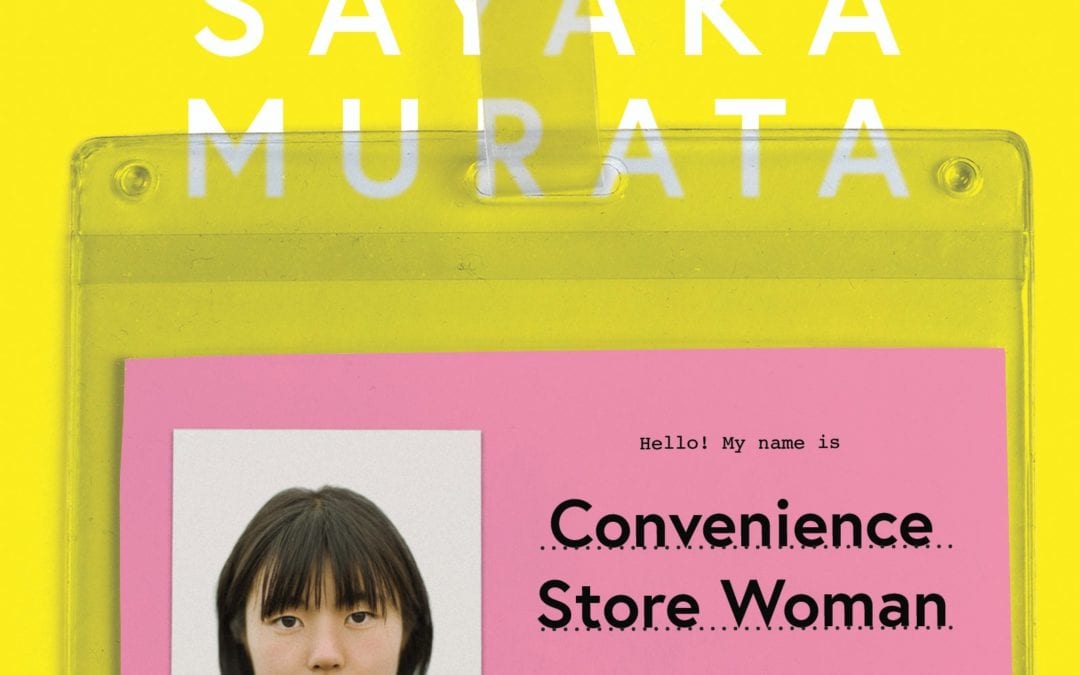One of the major public descriptions of Sayaka Murata’s novel Convenience Store Woman, when it was first released as an English translation in 2018, was weird. Many reviewers were simultaneously shocked and enchanted by the protagonist, Keiko, and her quirky, literal narration; Julie Myerson called her “sublimely weird” and “nuttily likeable”.
Convenience Store Woman follows Keiko, a woman in her thirties living in Japan, where she works in a convenience store. Japan’s convenience stores are famous for their highly regulated atmosphere, and serve as one-stop shops selling small household items and snacks. They are viewed as an ideal place for college students or older people to work, but a role as a convenience store worker is not a career. This is something that throughout the novel, Keiko is deeply frustrated by. She started working at the convenience store as a student, and enjoyed the approach to life it gave her so much that she chose to remain there, much to the annoyance of her family and friends. They express surprise at her happiness in what they see as such a menial job and ask her when she plans to marry and have children, but she is happy to live alone and continue working at the convenience store.
However, it isn’t just that Keiko doesn’t want to leave: she feels she can’t. For her, the manual for working in the store is like a manual for life, telling her how to behave without fear of getting it wrong. Without the convenience store, she feels lost, trapped in a world where she is considered strange and unsettling. When her co-workers talk about a colleague who was fired for unreliability, Keiko silently worries that one day she too will cease to “be a useful tool”, and wonders how she would structure her life without the safety and familiarity of the convenience store. She has little interest in family or friends: when she visits her sister, who has a newborn baby, she compares the child to the baby of her friend Miho and feels that “there wasn’t any difference between Miho’s child and my nephew […] they were all just an animal called a baby”. The pressure the people around her put on her to follow their life patterns, to change her job or get married, frustrate her.
The novel’s exploration of social pressure is fascinating, but something that enhances it is Murata’s implication that Keiko is autistic, struggling to live in a neurotypical society in which only the convenience store can provide the stability she needs. Writer Naoise Dolan, who is autistic, wrote in a review for the Guardian that “I’d thought my brain was too different to appear in a novel, but there I was”, and suggested that many readers’ insistence that Keiko was weird was a failure to understand her way of thinking (Keiko wonders as a child why her family cannot eat a dead bird in the park, or why she was wrong to hit a child in her class to stop him fighting). Autism activist Josefina (who can be found on Instagram) noted how the book depicts the “difference between putting on a mask for a few hours and actually forcing yourself to be palatable”. Keiko loves wearing the mask the convenience store offers her, but struggles to pretend to be like the other people in her life outside of it (and is much unhappier when she does).
Convenience Store Woman was the first of Murata’s novels to be translated into English, and I hope its success will encourage a wider readership of her work and the lives it depicts.
Words by Caitlin Molly Farrell
Want more Books content from The Indiependent? Click here
